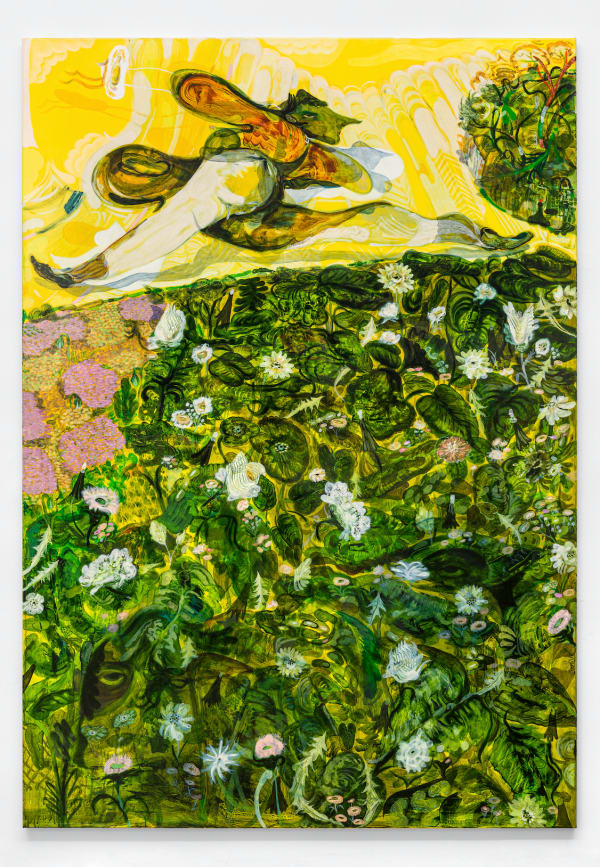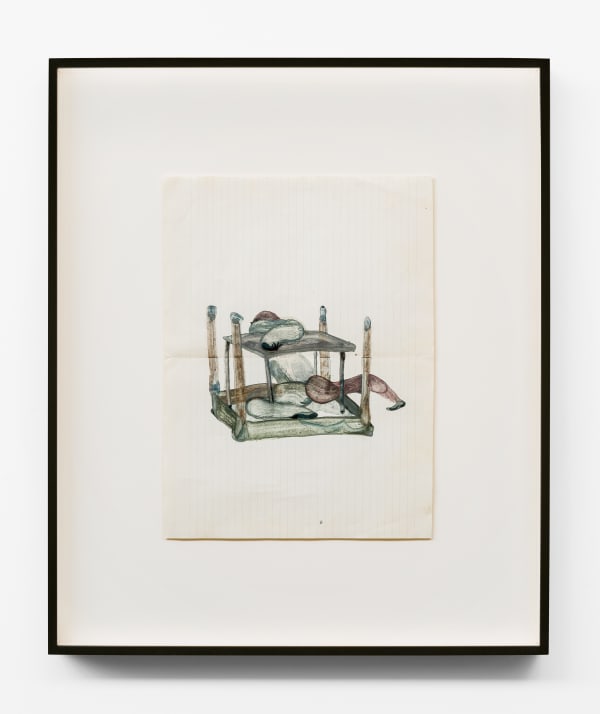Calm acts in closed room Guglielmo Castelli
Past exhibition
Overview
Mendes Wood DM is pleased to announce the gallery’s first exhibition of work by the Italian painter Guglielmo Castelli. An intimate group of psychologically charged works – four oil paintings and three works on paper – will provide viewers with an insight into the artist’s complex universe.
Dense with references to European art history, Metaphysical painting, Gothic and Symbolist literature, Renaissance architecture and set design, the paintings can be viewed as questions to be deciphered, leading to deliberately open-ended answers that start from the very title of the show. “An ‘act’ is something physical, a ‘room’ is a space. Together these elements combine to make what we call ‘narrative’,” Castelli explains, referencing his training as a set designer for theatre.
Castelli’s work is a dark, ominously symbolic, and immersive conflation of architecture, space, the body, theatre, storytelling, literature, and history, which intentionally defies any obvious narrative or linear meaning. “Something is unsettling, creaky, something is always hard to grasp in my paintings,” Castelli explains. “If it is not disturbing enough then I will add elements to make it more so. I am trying to create some non-comfort zones.”
Using the canvas as a theatre set, Castelli describes his practice as depicting actions “in stasis” that beg the question of what happened before and what will happen after. “Up until the 1950s, in set design, there used to be a position called ‘trovarobe’ (literally ‘finder of things’) which is still the way I think of my work sometimes. It is about looking for elements of representation and bringing them together to tell a story.”
Dense with references to European art history, Metaphysical painting, Gothic and Symbolist literature, Renaissance architecture and set design, the paintings can be viewed as questions to be deciphered, leading to deliberately open-ended answers that start from the very title of the show. “An ‘act’ is something physical, a ‘room’ is a space. Together these elements combine to make what we call ‘narrative’,” Castelli explains, referencing his training as a set designer for theatre.
Castelli’s work is a dark, ominously symbolic, and immersive conflation of architecture, space, the body, theatre, storytelling, literature, and history, which intentionally defies any obvious narrative or linear meaning. “Something is unsettling, creaky, something is always hard to grasp in my paintings,” Castelli explains. “If it is not disturbing enough then I will add elements to make it more so. I am trying to create some non-comfort zones.”
Using the canvas as a theatre set, Castelli describes his practice as depicting actions “in stasis” that beg the question of what happened before and what will happen after. “Up until the 1950s, in set design, there used to be a position called ‘trovarobe’ (literally ‘finder of things’) which is still the way I think of my work sometimes. It is about looking for elements of representation and bringing them together to tell a story.”
Works
Installation Views








